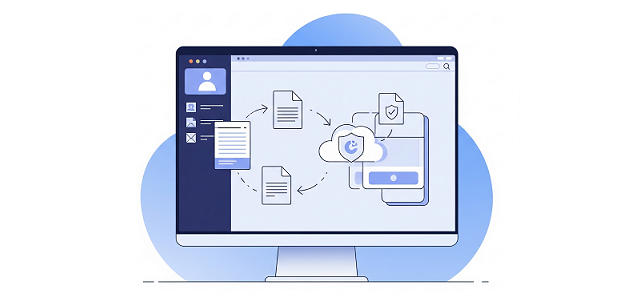Best Free & Open Source Backup Solutions for 2025 (Expert Guide)

As data grows in complexity and volume, securing it becomes more critical than ever. Whether you’re managing home devices, development servers, or enterprise infrastructure, having a solid backup solution is a must. In this 2025 expert guide, we highlight the best free and open source backup solutions you can rely on—covering a range of use cases from simple file backup to virtual machine snapshots.
✅ Why Use Open Source Backup Software?
Open source tools offer transparency, flexibility, and—most importantly—freedom from vendor lock-in. They’re ideal for:
- Budget-conscious businesses and startups
- Home lab and self-hosting users
- Developers and DevOps teams needing custom automation
You also get access to strong communities, frequent updates, and the ability to audit the code yourself.
🔍 How to Choose the Right Backup Tool
Before choosing, consider:
| Criteria | Questions to Ask |
|---|---|
| Backup Type | Do you need file-level, block-level, or VM backup? |
| OS Compatibility | Linux, Windows, macOS? |
| Storage Destination | Local disk, cloud, SFTP, external drive? |
| Scheduling | Does it support cron jobs or real-time snapshots? |
| Encryption & Security | Does it encrypt backups at rest and in transit? |
| GUI or CLI | Do you prefer command-line flexibility or a graphical interface? |
🛠️ Top 7 Free & Open Source Backup Tools for 2025
1. Duplicati
- Platforms: Windows, macOS, Linux
- Interface: Web GUI
- Features: AES-256 encryption, compression, incremental backups
- Cloud Support: Yes (S3, Dropbox, OneDrive, etc.)
- Best For: Desktop users and small businesses wanting easy cloud backup
Highlight: Simple web interface with robust scheduling options and encrypted cloud support.
2. Restic
- Platforms: Linux, Windows, macOS
- Interface: Command-line
- Features: Deduplication, encryption, snapshotting
- Cloud Support: Yes (Backblaze, S3, Azure, Google Cloud)
- Best For: Power users who want lightweight and scriptable backup
Highlight: All-in-one binary with fast, secure, and automated backup features.
3. BorgBackup (with Vorta or Pika GUI)
- Platforms: Linux, macOS
- Interface: CLI + GUI (via Vorta/Pika)
- Features: Deduplication, encryption, compression
- Cloud Support: Limited (via mount or SSH)
- Best For: Local NAS and encrypted disk backups
Highlight: Fast, secure, and efficient; popular in privacy-focused environments.
4. Duplicity (with Déjà Dup frontend)
- Platforms: Linux (native), macOS via brew
- Interface: CLI + GNOME GUI
- Features: Encrypted, incremental backups using GnuPG
- Cloud Support: Yes (via WebDAV, S3, SCP)
- Best For: Linux desktop users
Highlight: Great integration with GNOME; supports cloud targets and scheduling.
5. Bacula / Bareos
- Platforms: Cross-platform
- Interface: Web GUI + CLI
- Features: Enterprise-grade backup with database cataloging, encryption, tape/cloud support
- Best For: Enterprises with multiple servers and clients
Highlight: Centralized backup for large infrastructures with detailed configuration.
6. Kopia
- Platforms: Linux, macOS, Windows
- Interface: CLI + Web GUI
- Features: End-to-end encryption, deduplication, snapshots
- Cloud Support: Yes (S3, Google Cloud, Azure, etc.)
- Best For: Home lab users and developers looking for modern, flexible backups
Highlight: Fast and modern architecture with minimal resource usage.
7. Proxmox Backup Server
- Platforms: Debian-based servers
- Interface: Web UI
- Features: Integrated with Proxmox VE, supports VM and container backups
- Cloud Support: Limited (requires external sync)
- Best For: Proxmox users and virtualization admins
Highlight: Built for high-performance VM/container backup in production environments.
📊 Backup Tool Comparison Table
| Tool | Platforms | GUI/CLI | Encryption | Deduplication | Cloud Support | Best For |
|---|---|---|---|---|---|---|
| Duplicati | Win/mac/Linux | Web GUI | ✅ AES-256 | ✅ | ✅ | Cloud & personal backup |
| Restic | All | CLI | ✅ AES-256 | ✅ | ✅ | DevOps & automation |
| Borg | Linux/mac | CLI/GUIs | ✅ AES-256 | ✅ | Partial (SSH) | NAS & local backups |
| Duplicity | Linux | GUI/CLI | ✅ GPG | ✅ | ✅ | Desktop Linux users |
| Bacula | All | GUI/CLI | ✅ | ✅ | ✅ | Enterprises |
| Kopia | All | GUI/CLI | ✅ AES-256 | ✅ | ✅ | Home labs & pros |
| Proxmox | Debian-based only | GUI | ✅ | ✅ | Limited | VM & container backups |
📚 Case Studies / Real-World Usage
- Home User: Duplicati backs up documents to Google Drive weekly
- Freelancer: Uses Kopia with S3 backend and cron jobs for project backups
- IT Admin: Automates Proxmox backups every night to an off-site server
- DevOps Team: Restic + GitHub Actions for CI/CD config backups
🔐 Backup Best Practices (2025)
- Follow the 3-2-1 Rule: 3 copies, 2 different media, 1 offsite
- Encrypt everything, even local backups
- Test restores regularly
- Automate with cron or systemd timers
❓ Frequently Asked Questions
What’s the difference between file-level and image-level backup?
File-level backs up individual files and folders. Image-level takes a full system snapshot (e.g., VM).
Is open source backup software safe to use?
Yes—as long as it’s well-maintained and used with proper encryption.
Can I use these tools for cloud backups?
Yes. Tools like Restic, Duplicati, and Kopia support S3, GCS, Azure, and other cloud targets.
Which tool is best for beginners?
Duplicati or Déjà Dup are easiest to use with friendly GUIs.
🔗 Useful Resources
🚀 Final Thoughts
Open source backup software has never been more powerful. Whether you’re backing up code, media files, or entire virtual machines, there’s a free and community-driven solution for your needs.
🔸 Need something beginner-friendly? Try Duplicati.
🔸 Want high-speed, secure automation? Use Restic or Kopia.
🔸 Managing virtual machines? Proxmox Backup Server is your go-to.